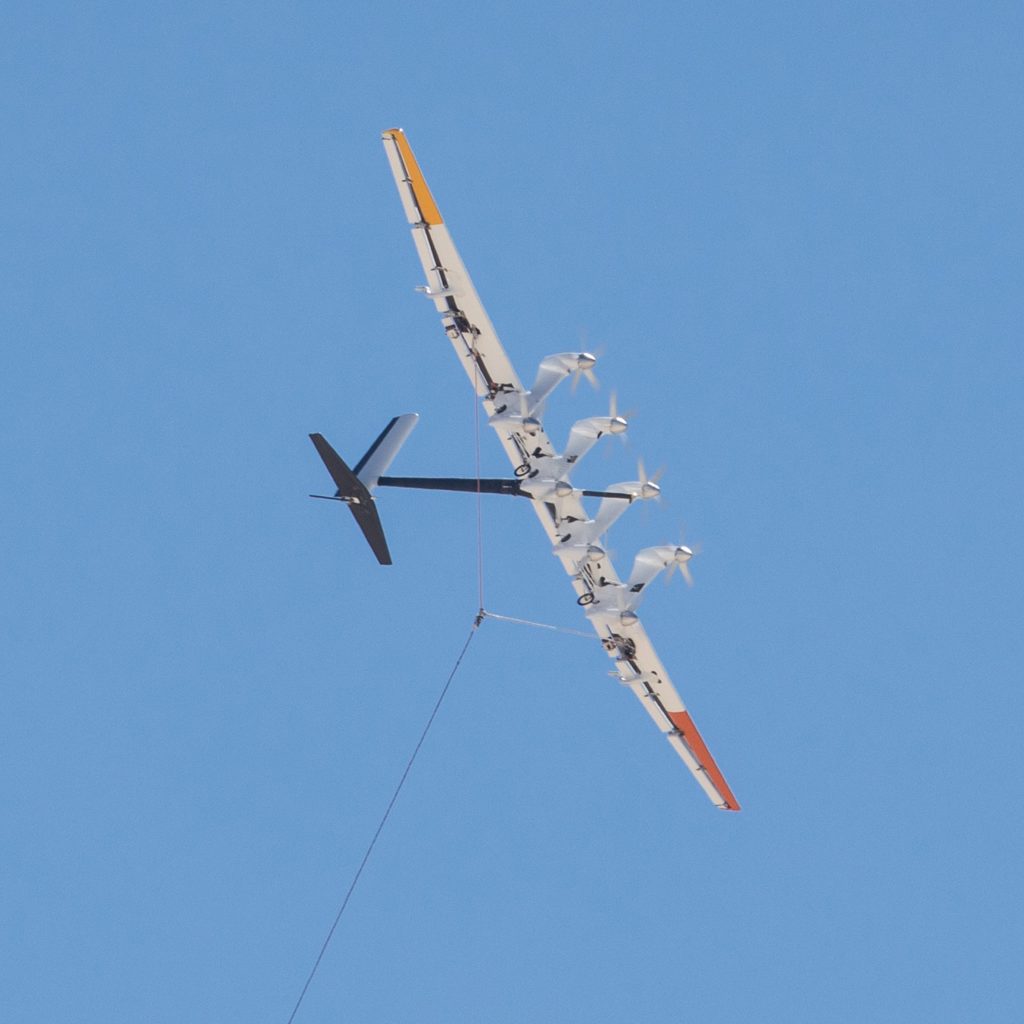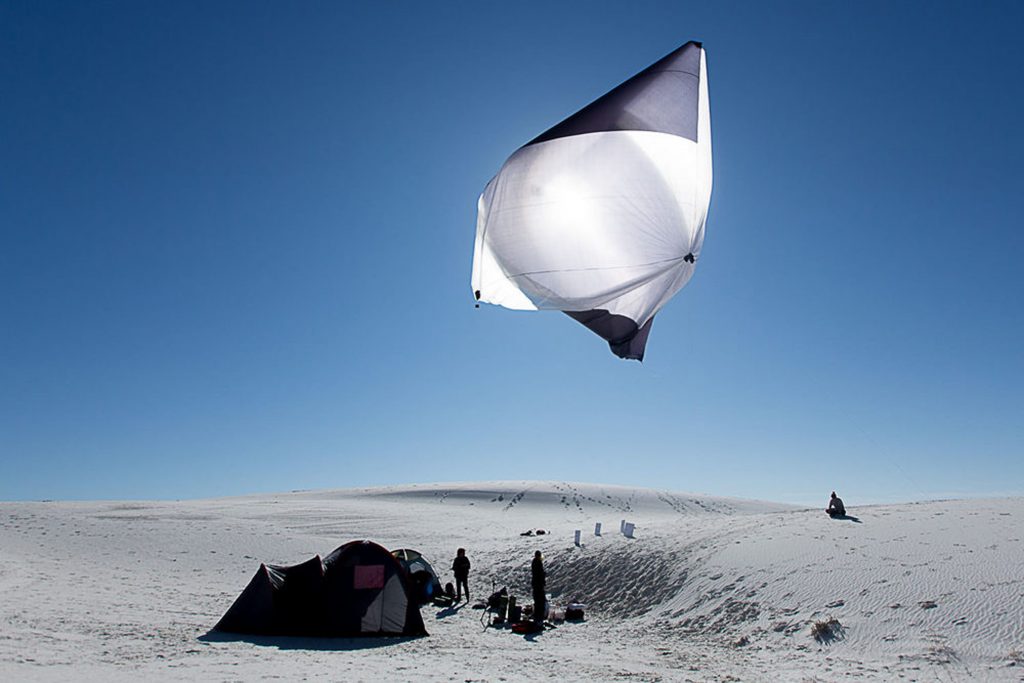We were stunned by the creativity, imagination and forward thinking of these projects — all based on kites and flight. While Craig Green’s work for Moncler gives fashion another dimension, the Makani and Albedo projects offer a glimpse of what the future might hold for flight and energy. We hope all three will let your imagination take flight too.

Kite Sculptures, Craig Green for Moncler Genius Collection
Combining his workwear sensibility with his passion for all things kinetic, designer Craig Green has created a series of mechanical and cantilevered machines out of curtain rails and weights, which he has built around the collection of brightly-coloured garments he has created for his recent partnership with Moncler.
The collection continues Green’s visionary way of looking at clothing from as much of an architectural perspective as pragmatic. Green says: “I have always explored ideas of protection and functionality within my work, something that is also at the core of Moncler’s heritage. I thought it would be interesting for these ideas to be pushed further, interpreting Moncler’s performance-based history and developing designs with their years of technical knowledge and expertise.”
Green worked with South West London company Asylum Models & Effects to animate the wooden kite sculptures — the challenge being to generate enough movement without compromising their delicate, structural integrity. Asylum came up with A-frame scaffolding, attaching the rigging to the suspended kites in the middle.

Energy Kite by Makani
The Makani energy kite is an aerodynamic wing tethered to a ground station to efficiently harness energy from the wind, generating electricity at utility-scale.
Propellers on the wing act like rotors on a helicopter taking off to lift the kite off the ground station. The kite takes off perpendicular to the wind and climbs to a height of 1,000 ft, at which point it begins looping without consuming any energy. This looping is called ‘crosswind flight’ – a phenomenon you can experience if you take a kite to a park on a windy day. The air moving through the rotors on the wing forces them to rotate, which drives a generator to produce energy that is sent down a specially engineered tether to the ground. The kite’s path is managed by the flight computer, which guides it even in turbulent winds, and safely returns it to the ground station. Watch both of these videos to fully understand how Makani works and to see it in action:
Albedo by the Aerocene Foundation, with Tomás Saraceno, was a large-scale temporal pavilion comprised of 40 reflective out-turned umbrellas, creating a hemispherical sundial on the Miami Beach oceanfront during Art Basel Miami Beach 2018.

Aerocene, Photo by Studio Tomás Saraceno
Aerocene is an interdisciplinary artistic project that seeks to devise new modes of sensitivity and an ‘ethical collaboration’ with the atmosphere and the environment. Its activities are based around creating and testing lighter-than-air sculptures that become buoyant only by the heat of the sun, the power of the wind and infrared radiation from the surface of the earth.
The project imagines a new infrastructure to challenge and redefine an international right to mobility, reversing the extractive approach that humans have developed toward the planet, and re-examining freedom of movement between countries.